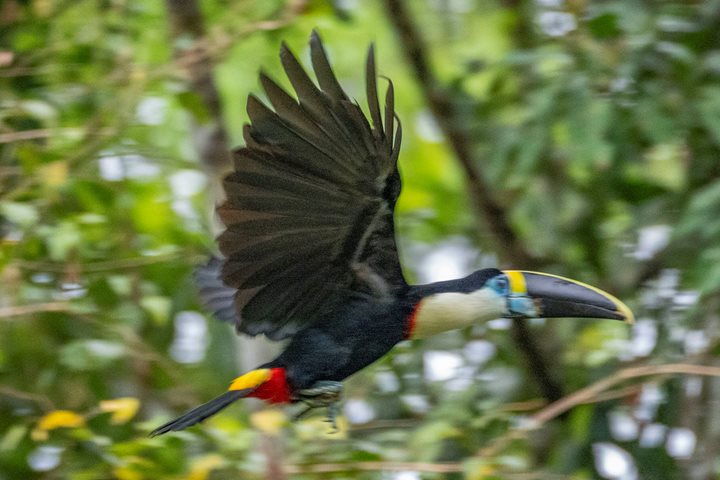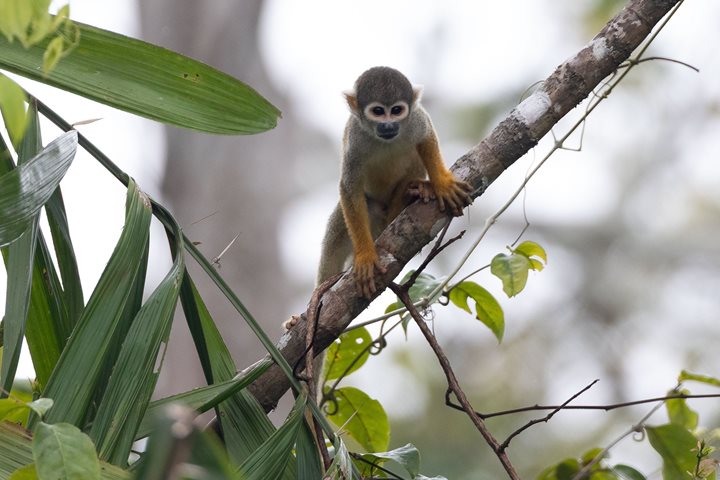This morning on our before breakfast skiff ride, we were treated to many wonderful wildlife sightings. The blue and yellow macaws put on quite a show in the dead palm trees right beside the river. Two at a time the pairs would move from tree to tree, at one point gathering in a group of six. Our binoculars and cameras captured their amazing colors and antics. Continuing up the river we saw capped herons, two species of trogons, a chestnut eared aracari, and the large white-throated toucan. The cloudy skies were a wonderful benefit—it kept the morning cool and made the colors easier to see. We also enjoyed our first views of three night owl monkeys who, being nocturnal, were perhaps just heading to bed after their night of “work.” These monkeys return to the same hollow tree to sleep the day away.
After breakfast we put on our boots and headed out into the forest. It was fun to walk through the forest that in a few months will be flooded as part of its annual cycle. As we walked the trail we could see marks high above our heads on some of the trees that indicated the height of the water during the flood season. The most impressive of the trees we saw was a large strangler fig with roots that towered above our heads like stilts or maybe the framework for an elaborate building. Whether with stilts or buttresses or just a straight “normal” trunk, all these trees have one thing in common. They are all specifically adapted to not only survive but thrive in a flooded habitat.
This afternoon we had another kayak outing in a pretty lake near El Dorado River. As the skies got dark we did not hurry back to the Delfin II. Instead we awaited its arrival and tried our luck at finding caimans in the dark. With the help of a spotlight and the keen eyes of our guides, the red eyeshine of the caimans gave away their location. Equally enjoyable were the sounds of the night—the amphibian and insect chorus, complete with surround sound, let us know that there were many more eyes out there then we could see or imagine.







